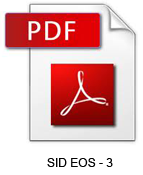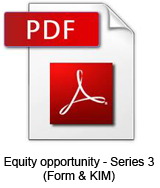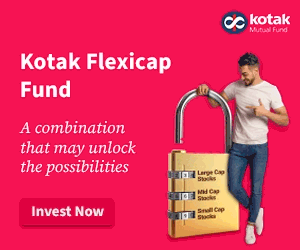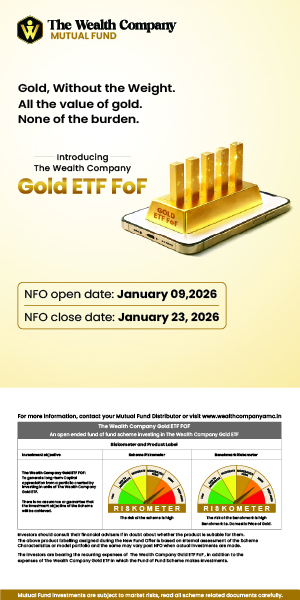Our flagship fund has created immense wealth for investors inspite of a challenging economic environment
BFSI Industry Interview
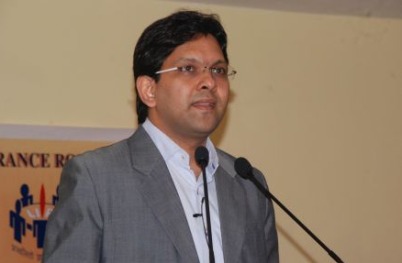
Kalpen Parekh is the Chief Executive Officer of IDFC Mutual Fund. In a frank discussion with Advisorkhoj he shares the rationale behind launching the NFO of IDFC Equity Opportunity – Series 3 Fund. He also discusses the creative work that IDFC AMC is doing in taking Mutual Fund to the masses. Kalpen is a Bachelor of Engineering (B.E.) and done his MBA from Narsee Monjee. Prior to joining IDFC he worked as Sr. Vice President with Birla Sunlife AMC. He also worked with ICICI Prudential AMC as Co – Head Sales.
Advisorkhoj congratulates you for launching IDFC Equity Opportunity – Series 3 NFO. This is the 3rd in the series of 'Equity opportunity'. Can you please explain to our readers what Series-1 & 2 was all about?
Thanks!
Our past experiences show that investments done at the bottom of an economic cycle does better than at the peak. We are at multi year low growth rates and it will take time for growth to revert to old highs. And in times like this, there are still enough businesses doing well as they have a strong operating matrix. You can have great headlines OR great prices, both rarely come together.
Ironically, equity ownership is low when prices are low. An attempt to encourage investors to enhance equity exposure, when valuations are reasonable is our concept of Equity Opportunities Series
Both Series 1 & 2 were launched with a backdrop of recent economic environment of consolidation. In EOS1 we built a portfolio with small caps and micro caps with good business models which were trading at almost a decade low valuations. In EOS2 we picked businesses with the filter of businesses having assets on the ground, running low on capacity utilization and having potential to give good returns as these businesses sweat their assets better.
It is a Close ended equity scheme for 21 months. What is the rationale behind keeping it exactly 21 months?
EOS 3 is a portfolio of strong earnings growth companies with Cash flows. These are companies which are allocating capital more efficiently. For e.g., a company with cash flows has following options a) Repay debt b) Invest back in business by adding more assets. As per our filter of stock selection, most of our companies are No Debt or Low Debt companies; hence Option a) is not relevant. At the same time, Return on Equity in this economic environment has been so low that it does not make sense to invest back in business at low RoEs. So such companies are prudent enough to rather give the money back to shareholders by paying more dividends.
We believe, over time, as the economic environment consolidates, RoEs would improve and companies would start investing back in assets/new capacities – Option b). To do that, they would tend to reduce their payouts and markets would also reward companies incurring capex Vs companies focused on dividend payouts. This cycle of capex may begin 2 to 3 years down the line and hence we would want to play the dividend payout story till then and return the money to investors before the investment cycle begins.
IDFC Premier Equity fund – one of the biggest wealth creator for Mutual fund Investors in India (27.04% annualised return* on 5 year period performance), when you have such a great fund, then you could have focused on that instead of bringing another NFO. Your comments please?
You are right, that Premier – our flagship fund – has created immense wealth for investors inspite of a challenging economic environment and flat markets. We also keep the fund shut for new investments. The best and only way to invest in Premier is through disciplined SIPs and STPs. We continue to focus on Premier and it comprises of more than 60 % of our monthly sales flows. We are happy to showcase Premier on your website
Premier also shall be and has been investing in such smart/ prudent businesses to a certain extent. Our basic filters of company selection across all our funds remain same: Consolidated businesses, Companies with low/No Debt, Pricing Power and efficient capital allocators. So EOS 3 will play the theme of high dividend payout companies to the extent of 100 % whereas other funds including Premier will have them to a smaller extent.
When there are so many open ended funds available to investors, why they will invest in this close ended fund? What value ‘close ended’ brings to the table for the Investors?
We prefer to offer diversified ideas through our open ended portfolios and thematic ideas through close ended funds, so that we can control the entry as well as exit points. Investment ideas are many, when investor flows (Sales volumes) are less and vice versa. Once the theme makes money, we have seen the basic greed playing out and investors tend to chase past performance. So a close ended fund will ensure investors don’t buy the fund once theme and the NAV peaks. This structure is done with intent of creating +ve investor experience. Also, isn’t it more appropriate that close ended funds come towards bottom of a cycle rather than peak of a cycle (as in 2008)
Can you please explain how it is going to be different from your other existing equity schemes?
The key difference is that other funds are diversified while this fund will be concentrated around a specific theme of companies likely to have higher dividend payouts, because of the current environment of consolidation. This fund will have 100% portfolio invested in such companies while other funds will have a smaller exposure to these companies
It claims to recognise smart businesses. How do you define a business 'smart'? And what would be your criteria for selecting these 'smart businesses'?
Capital Efficient business – with stable earnings growth – high cash flow generation – in an economy of consolidation, paying out to investors as dividend.
You are trying to put together a portfolio of companies paying out a higher percentage of their profits through dividends. But, there are companies which have better performances but do not distribute good dividends. Therefore, by not investing in them are you not compromising on the portfolio quality and thus on the returns?
Firstly, dividend payout is the last block of the check list. The first check points are there for all the stocks to make the cut. So portfolio quality will not be compromised anyway. For companies with robust operating matrix and performance and not paying high dividend as must criteria, our existing funds will be more than happy to accommodate you.
If the theme is 'higher percentage of dividends' then how do you differentiate this fund from the existing dividend yield funds of other AMCs which are also open ended?
We don’t claim to be unique or different. We need more of the same, if the idea is good, for more investors to benefit. A small difference would be the finite life of the fund. This theme does well in a consolidating environment and takes a backseat in an expansionary environment. Our 21 Month tenor aims to just play the consolidating environment and return the money back before the beginning of next capex cycle
Also, since the theme is ‘higher percentage of dividends’, then will you also endeavour to reward the investors by disbursing dividends from the fund profits? Or will you give back the entire capital appreciation after 21 months?
We have only kept 2 options – Dividend Payout and Dividend Sweep. So as we book the profits, it will be shared with the investors.
Being a close ended fund what would be the taxation structure of the fund on maturity?
DDT (Dividend distribution Tax) on equity schemes is nil. Only STT [0.001%] will be the applicable tax.
Would you suggest your existing Equity Scheme Investors to switch a portion of their holdings into this scheme and enjoy benefits of 'smart businesses' too?
We do not encourage churn from existing portfolios. These are times to increase equity exposure.
Why should an Investor consider this scheme? Can you give us three quick points?
- Portfolio of good/smart businesses
- Such companies tend to do well in current economic environment
- IDFC MFs Track Record across all our Equity Schemes
Penetration of Mutual funds beyond few top cities has not been significant despite Industry being there for last 20 years! How you are going to explain this unique concept in cities where people are still struggling to understand even the plain vanilla 'diversified equity funds'?
We share the same concern. And we have been up in action very vividly in the last few years. We have launched a number of tools which can help an investor understand the platform and the option basket with ease. We have covered a good number of schools and colleges pan India with a movie on investor awareness– One Idiot(which is an IDFC foundation initiative). Please check the same on: http://oneidiot.in/. For the grownups, we have come up with another movie 'Bachat Nivesh Badhat'. We have made our official website interactive enough for anyone interested to come and know about the initial ropes of Mutual Fund.
In the same line, the first three pages of the form of EOS3 read a story Mr. Shareholder and Mr. Vijay for an investor to understand the theme we are trying to capture. Please have a look; I am sure you will love it!
So, with the kind of ground work we are doing, in times to come, I am sure the picture in front of us will be different.
To know more about the fund – Download SID EOS – 3 and Equity opportunity – Series 3 (Form & KIM)
Recent Interviews
-
In conversation with Mr Pratik Oswal Chief of Passive Business of Motilal Oswal MF
Jan 6, 2026
-
In conversation with Mr Nilesh Jethani Fund Manager Equity with Bank of India Mutual Fund
Jan 6, 2026
-
Partner Connect by Advisorkhoj with Mr Amit Kalra Glorious Path Pvt Ltd New Delhi
Dec 5, 2025
-
Partner Connect by Advisorkhoj with Mr Alok Dubey PrimeWealth Pune
Dec 1, 2025
-
In Conversation by Advisorkhoj with Ms Aparna Shanker Chief Investment Officer Equity The Wealth Company Mutual Fund
Nov 28, 2025
Fund News
-
The Wealth Company Mutual Fund launches The Wealth Company Gold ETF FOF
Jan 9, 2026 by Advisorkhoj Team
-
Mahindra Manulife Mutual Fund launches Mahindra Manulife Innovation Opportunities Fund
Jan 9, 2026 by Advisorkhoj Team
-
Jio BlackRock Mutual Fund launches Jio BlackRock Short Duration Fund
Jan 8, 2026 by Advisorkhoj Team
-
Jio BlackRock Mutual Fund launches Jio BlackRock Low Duration Fund
Jan 8, 2026 by Advisorkhoj Team
-
Groww Mutual Fund launches Groww Small Cap Fund
Jan 8, 2026 by Advisorkhoj Team



